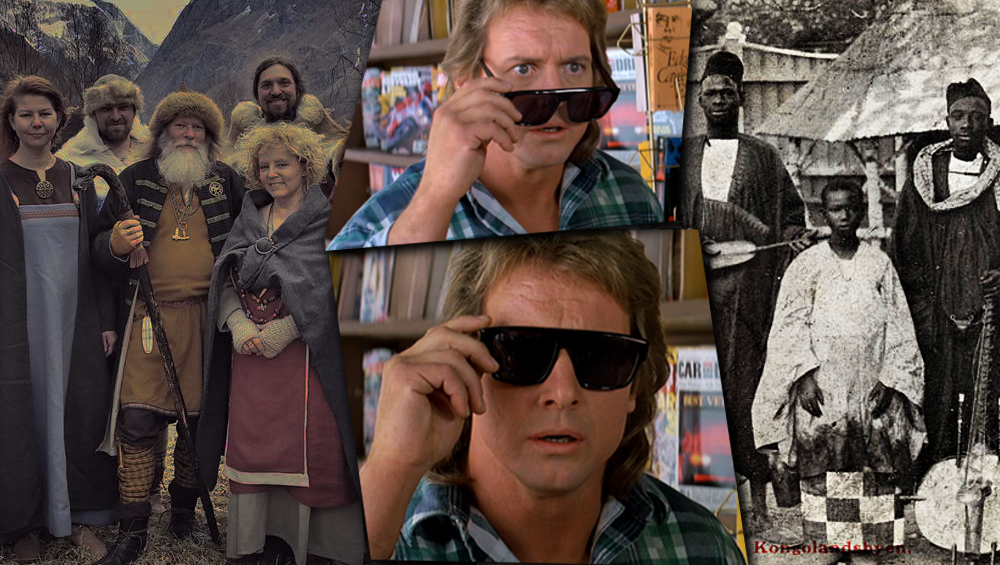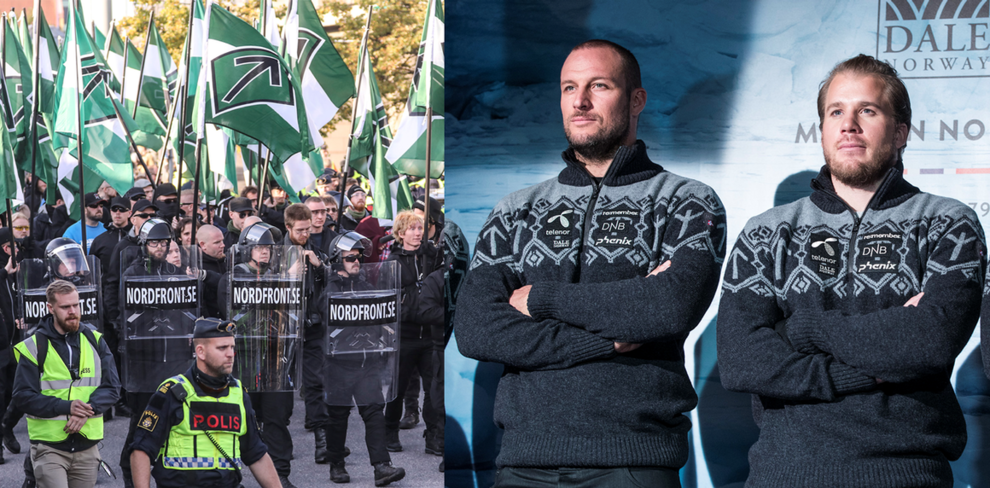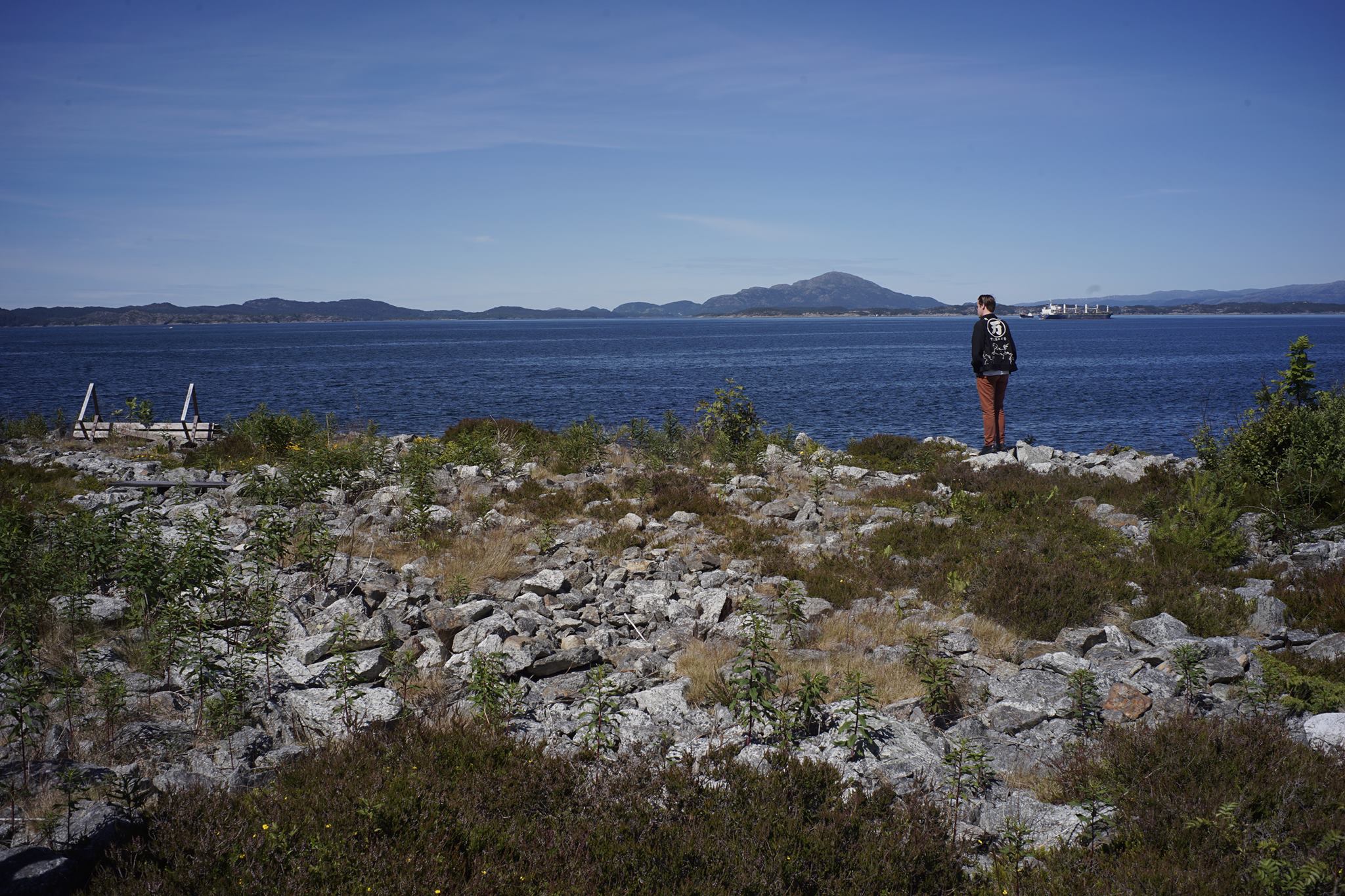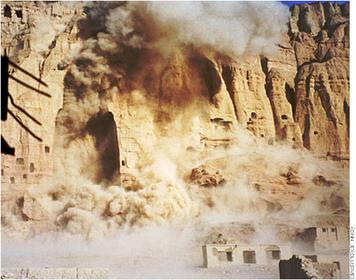"A Congo Village for Western Norwegians": Njardarheimr in Gudvangen
/It was a regular humid Saturday morning here in New Jorvik, USA, when I opened my browser hoping for news of the old country, so that just for a minute or two I could forget the dismal stank of the big city. Scrolling through my feed, I was swept to the edge of my seat at the sight of a letter to the Norwegian newspaper Klassekampen from the day before. It seemed to be a merciless slaughter of the newly erected "viking village" of Vikingvalley - Njardarheimr in Gudvangen, on the beautiful banks of Nærøyfjorden, incidently a UNESCO world heritage site (the landscape, not the village).
I leaned over to light a smoke from the perpetually burning miniature raven banner that stands on my desk and got to reading. The scathing critique was penned by a certain Aud Farstad, an author, and apparently some kind of healthcare historian. Below the subheading "Why do they want to present a ficticious Viking Age at the world heritage site?" the main title "Viking-Kitsch" beamed at my eyes, illustrated by an outdoor barbeque and a wooden statue of Georg Hansen standing at the prow of a viking ship. The visionary, the dear leader if you will, to Gudvangen's banana republic. As I went on I could hardly believe what I was reading. Lest it be unsaid: Farstad isn't pulling any punches. Like a reboot of Carpenter's They Live set to a Viking backdrop, she's donned her magic kitsch-ray glasses and revealed the sinister agenda hidden beneath the dragon heads. All out of bubblegum to chew, she proceeds to kick ass.
CONSUME
In her smörgåsbord of complaints, Farstad begins by alluding to the ongoing discussion of negative consequences of mass tourism in Norway. This ruse keeps the reader's attention long enough for her to slip us the real reason behind her letter: Let us for a minute, avert our eyes from the cruise lines lining their pockets with fjord murder, and take a look at what we are offering them by means of representation, she implores. She recently went to Gudvangen and was shocked by what she saw, she says. The UNESCO heritage badge is a confirmation that what we have in the fjords, and sites like Gudvangen in particular, is not only unique but fragile. Culturally and naturally distinct as this region is, it would be hard to disagree. Her critique directly attacks Njardarheimr's own illusion of authenticity which consists, according to her, of false representations, pseudo-historical architecture, and bizarre sales tactics consisting of attaching the prefix "viking" to everything. "Enjoy yourselves on the viking lawn!" as one caption hilariously reads. This mockery of history and our heritage reads almost like some sort of financial conspiracy with the tourist industry against the heritage site, she seems to claim, while also selling the tourists short with false representation.
All fair game if you ask me. But it doesn't take long before the letter takes a turn towards the counter-productively absurd. Much like the verbal scorn exibited by humiliated saga housewives, Farstad goes way overboard with her critique of Viking Age representation by staking the claim that the Viking Age possibly never actually existed(!). Citing some ghostlike and unnamed "historians", her complaint about "Viking activities", "Viking food" and so on, is not problematic just for the sake of obvious authenticity issues, but for the fact that "Viking food never existed". According to what seems to be be her line of reasoning, a "Viking hot dog" becomes a non-entity, not just because the so-called Vikings didn't eat hot dogs, but because there were no Vikings to eat hot dogs (!?). Is she being sincere? It is difficult to recognize her Viking Age revisionism in any history book I ever read. She is either splitting hairs on a subatomic level, a post-ironic genius, or she is insane. This is Poe's law in action.
They could haul a 10th century longhouse through a rift in time and space, and it wouldn't make a difference to Farstad, who claims she wouldn't mind such a circus anywhere else but the UNESCO site. She takes personal offense by the need to speak English in a nearby Hotel's souvenir shop, and is enraged by the fact that the menu of its attached restaurant is written in Bokmål, in the heartland of the Nynorsk norm of written Norwegian. Bokmål, as all Nynorsk writing Norwegians know, is the language of the enemy. The language of the regime.
She takes it as a personal insult that she, a red blooded Fjordwegian, whose ancestral blood saturates the land's vertical soils, for which the fathers fought and mothers wept, is subjected to this "Congo Village for West Norwegians". A term that recalls the controversial Congo Village displayed in the "amusement section" of the 1914 World Fair in Oslo, where people gawked at a staged ethnographic display of authentic negros doing authentic negro things (though presented as a Congo Village, the bulk of the participants were West African). A human menagerie of sorts. To stretch this analogy even further, she suspects that the "vikings" of Njardarheimr aren't even Norwegian, but - hold your breath - Eastern Europeans. " "Vikings" ", as she says in quotation marks. If she had paid to enter she might have found out, but apparently she refuses to do so.
Admitedly, some of Farstad's critics don't seem bright enough to get the point she is trying to make with the curious Congo Village analogy, which is by far the most original part of the text. Most obviously, I think she is trying to say that both are morbid displays that inspire no authentic respect for its apparent subject matter. It is only her clumsy delivery that leads denser readers to think she was assaulting African tribal culture as a whole, as if the mere act of being reminded of an embarrassing 104 year old ethnographic display is antithetical to current year discourse. That being said, Farstad's neurotic stance towards ethnography and cultural heritage is not without precedence. Rather, it finds itself in a fine tradition of inner struggles of the Norwegian self-image, constantly wrestling between chronophobic self-loathing and national pride, best exemplified by one time minister of justice Johan Castberg on the subject of Norwegian contributions to the World Fair in Paris, which I've translated below from the 1888 proceedings of the Norwegian Parliament:
"This has come to remind me of something a German told me many years ago. He said that in a market square down in Hamburg he had seen a man covered in feathers, sitting and ripping apart live hens and roosters with his teeth, spilling blood and feathers around him, and above this display it was written with big letters: "Ein Wilder von Norwegen", – a wild one from Norway, Mr. President!
I fear that something similar may happen to us if we allow ourselves to send to Paris, the cured hams and gamalost and fermented herring – and why not bring the fur pelt? We can afford it, we have enough of them left. But it would truthfully be sad if any of us present here today, should come to Paris and find the Norwegian people registered in some exhibition catalog as «Les Samojèdes de Norvège» – Samojeds from Norway, Mr. President!"
Johan Castberg
Mrs. Farstad ends her letter by asking rhetorically, as I know I have on many occasions, if people don't feel that real cultural heritage is worth presenting. I'd like to use the opportunity to point out to her that, at the very least, things can get a lot worse. One day we might well be begging for a place like Njardarheimr.
The author in Gudvangen. No complaints about the natural scenery.
OBEY
As a complement to the swiftly aging and dying race of Norwegians who can't stand the sight of anything older than Martin Luther, there are those whose historical illiteracy is only rivaled by their burning passion for the past. Though this "past" is often limited to the narrow window between Harold Fairhair's conquest in the 9th century, and the moment Olaf the Holy quit smoking.
I already am eating from the trash can all the time. The name of this trash can is ideology, says the chronic sniffler and culture critic Slavoj Žižek in The Perverts Guide to Ideology (2012). In the context of Viking Age representation and cultural heritage, it would be more fitting to switch verbs. I would say that we are sleeping. Sleeping all the time in the warm pig sty of authenticity. And in terms of this, no small percentage of Viking Age re-enactors are famous for their lavish slumber parties. Everybody is too busy braiding each others' hair and playing telephone to notice that they are sitting in pig shit, and the concept of authenticity smudged by an inability to take their research beyond the level of monkey see, monkey do. What I am about to repeat below is an all too familiar example of that culture, which insists on its own efforts, while constantly making every excuse to never improve their essential quality, and hence their educational value, in an age where it's never been easier to access the latest research, acquire raw materials, or employ craftspeople.
"I've heard ignorant people comment on things before", retorted Njardarheimr's CEO Frode Aas Tufte when the national broadcasting agency NRK invited them to defend their honor against Farstad's media raid, and would not take the criticism seriously. He also said something similar to me, when I commented under a facsimile of the original article that Njardarheimr is fine if its sold as what it is, namely a set of bungalows with dragon heads attached. On Farstad's claim that the village represents historical fabrication, he says they have not made any false claims, and that the buildings are based on documented Viking Age building techniques, with necessary modifications due to building regulations. When asked by the reporter if something more authentic would have been suitable for the world heritage site, Tufte replied with the following cop-out: "How it was in that time is unbelievably complicated and based on a lot of guesswork."
He's not exactly lying, but even when we consider the many uncertainties of early Norse architecture, modern building regulations, and their intended use, none of it serves to explain why Njardarheimr looks more like a children's movie set than any open air museum I've seen. Turns out they have an excuse for that too. According to their homepage, the village is intended as a place where "captivating stories of the Vikings and their age will be retold without the rains of a museum".
While I can understand the desire to shield one's brainchild from being pissed all over by third parties, I find Tufte's chosen defense perplexing. Treating any voice that doesn't suit his hearing as the words of ignorant people who don't know what they are talking about, only makes him look like an idiot. Clearly anybody less than enthusiastic about Njardarheimr is such a person, because they are not mind readers. One minute they insist on the authenticity of the product, while denying any such responsibility the next, or saying that they were under time constraints, trying to run a business, and so on, and so on. Always returning to the fact that the public doesn't know what their intentions are. The last part is true: I don't think anybody knows what they are doing.
Since then, medieval historians have come to describe the houses in Njardarheimr with terms like "garages with runestone inspired decor". John McNicol from the University of Tromsø points out diplomatically how it seems apparent that commercial concerns came before authenticity, tailored to a commercialized "Viking experience", which there is nothing wrong with in itself.
I admit that by ways of the carpenter's trade (in Njardarheimr's case also a concrete finisher, electrician, and brick layer) I don't have much worthwhile to say. But you don't need to be a museum conservationist to see that the famous Spanish "Monkey Jesus" fresco was a botched restoration job, either. Speaking as an academic, as well as from fifteen or so years of experience with living history communities, tourism, and museum education in and out of a Viking Age setting, I will still say that in terms of authenticity Gudvangen get a C-. That's solely based on their effort, hard work, and dedication to getting things expensively wrong. If they can't handle such assessments, they should stop hiding behind their self-righteous indignation, denying their bullshit like it's the Emperor's New Clothes. Their automated response that "none of our critics have seen the site" would have made sense in a world without photography, and I can say as somebody who's stalked its gravel pathways after closing time, that it looks exactly like it does in the pictures. If all they wanted was a vikitsch money-maker they already have it. From the perspective of the business it's all good. If it's supposed to be a playful and noncommittal arena for infotainment, great. Just be honest about the fact. They could be LARPing for all I care.
Last thing I heard, Tufte still refuses to accept critique and states that Njardarheimr is neither a theme park nor a museum, but a workshop for the Viking and Iron Age. Fair enough.
As a concluding remark I would like to treat Mr. Tufte and Mrs. Farstad to one authentic Viking chair each:



























